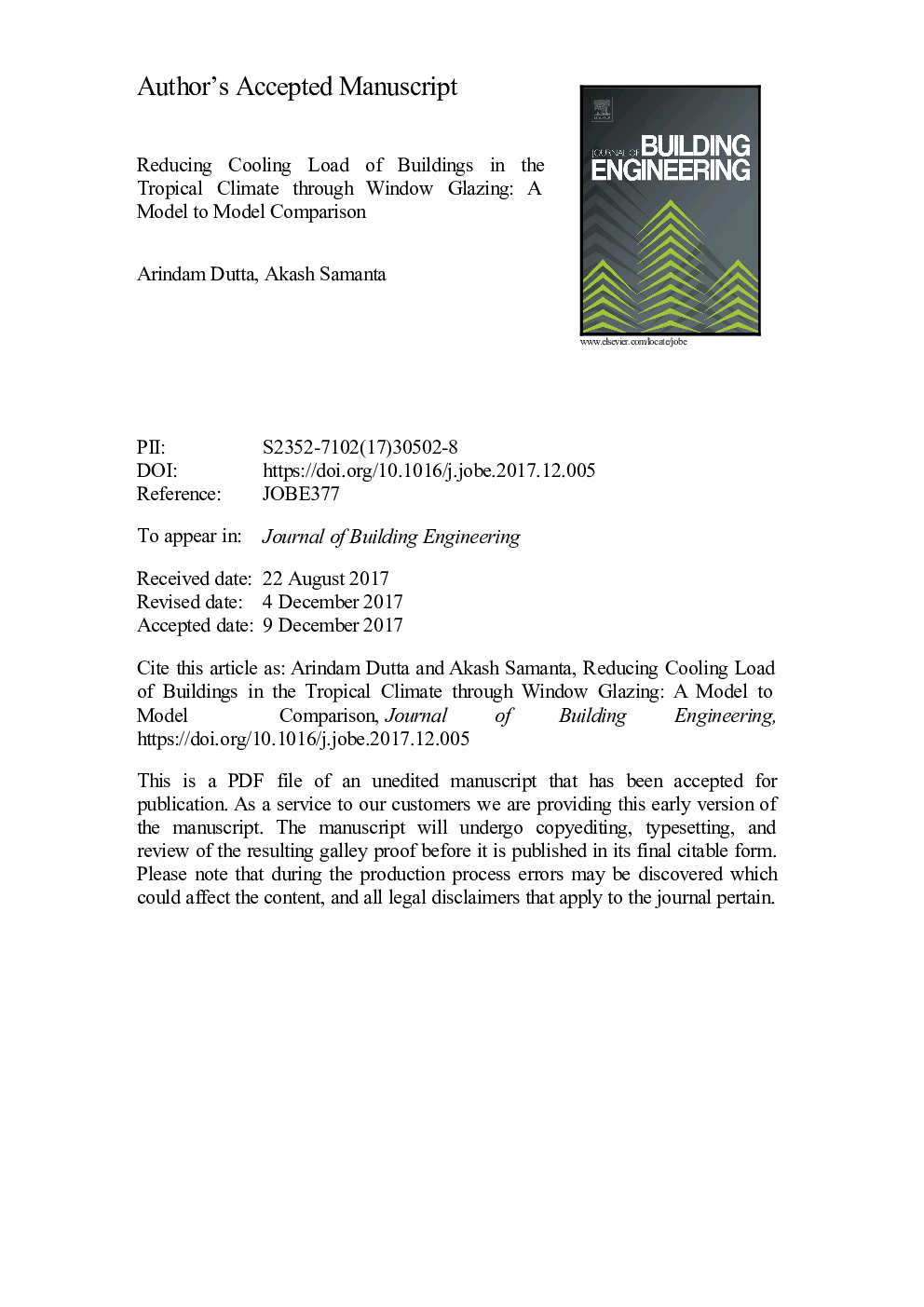| کد مقاله | کد نشریه | سال انتشار | مقاله انگلیسی | نسخه تمام متن |
|---|---|---|---|---|
| 6750109 | 1430633 | 2018 | 17 صفحه PDF | دانلود رایگان |
عنوان انگلیسی مقاله ISI
Reducing cooling load of buildings in the tropical climate through window glazing: A model to model comparison
ترجمه فارسی عنوان
کاهش بار خنک کننده ساختمان ها در هوای گرمسیری از طریق لعاب پنجره: یک مدل برای مقایسه مدل
دانلود مقاله + سفارش ترجمه
دانلود مقاله ISI انگلیسی
رایگان برای ایرانیان
کلمات کلیدی
موضوعات مرتبط
مهندسی و علوم پایه
سایر رشته های مهندسی
مهندسی عمران و سازه
چکیده انگلیسی
The comparison studies among various building simulation models are always the research interest for various researchers though most of them are based on a general overview. Here we compared two popular building simulation models TRNSYS & eQUEST for a multizone building to judge the relative accuracy of the models. The base case building having 1465.8Â m2 area is situated in a tropical climate zone of India. Both the models were validated with actual and simulated annual energy consumption data of the case building and a model to model comparison has also been performed. The RMSE values for both TRNSYS & eQUEST were found varying between 2.1-12.5% and the Relative Error was found varying â19.6% to 18.0% respectively. It was also found that TRNSYS predict more accurately the total energy consumption of building than eQUEST in this case study. However the main aim of this paper is to quantify the energy saving potential of five different type of single and double glazing glasses especially in case of tropical climate condition through two types of simulation models. Five different types of commercially available window glasses were designed using LBNL-Window7 simulation tool and validated with lab tested results. The percentage reduction of electrical energy consumption due to retrofitting of five types window glasses have also been presented separately for both the simulation models. Both the models revealed that SHGC is more dominating factor than U-value to reduce cooling load of building energy.
ناشر
Database: Elsevier - ScienceDirect (ساینس دایرکت)
Journal: Journal of Building Engineering - Volume 15, January 2018, Pages 318-327
Journal: Journal of Building Engineering - Volume 15, January 2018, Pages 318-327
نویسندگان
Arindam Dutta, Akash Samanta,
